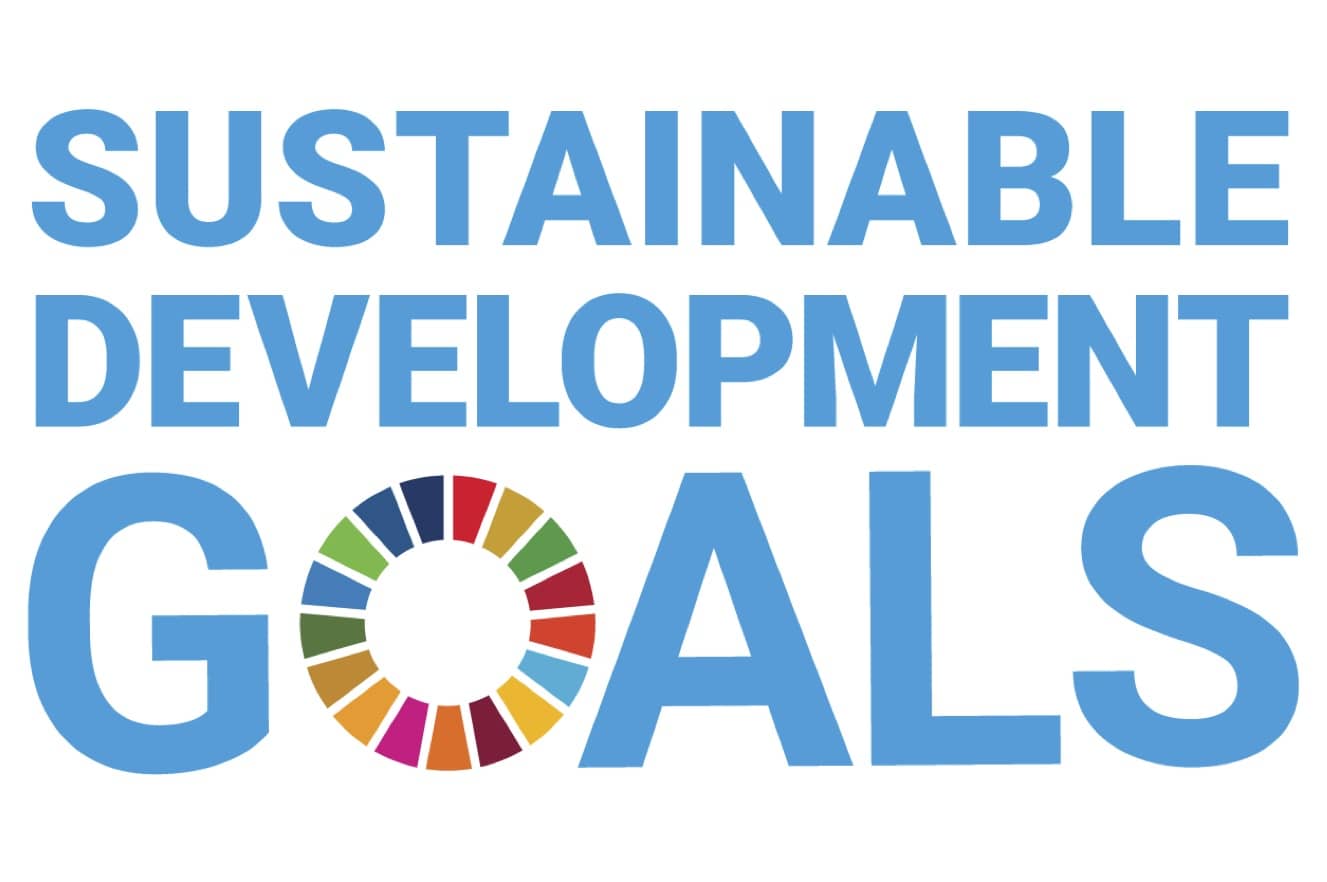
www.buildingsandcities.org/insights/commentaries/san-marino-declaration.html
Reflections on the San Marino Declaration

Another declaration has been announced - this one linking SDGs to architecture and planning. With so many criteria, can it achieve its ambitions?
The San Marino Declaration (SMD) is an attempt to harness the UN's Sustainable Development Goals for built environment professionals and key stakeholders. Cem Kayatekin (IE University) considers whether this Declaration can achieve its many ambitions and what's missing.
Adopted in October 2022 by the UN Economic Commission for Europe's Committee on Urban Development, Housing and Land Management, SMD provides principles for creating "sustainable, safe, healthy, socially inclusive, climate-neutral and circular homes, urban infrastructure and cities". The gestational period of the declaration dates back to the first meeting of the General Assembly's Advisory Committee on Sustainable Urbanization in December 2021. A wide range of the points found in the document are in turn echoed within the Future of Cities lecture series launched by the Norman Foster Foundation in November 2021, and Norman Foster's speech at the UN General Assembly in May of 2022. Taking a broader historical perspective, from the 1933 Charter of Athens to the 1999 Charter of New Urbanism, SMD is the latest in a long series of declarations distilling aspirations and ambitions to shape built environmental quality and practices, along with its ethical underpinnings, the most-immediate predecessor being Architects Declare (AD), launched in 2019.
There are eleven principles in total within SMD, underscoring the need for:
- social responsibility, inclusivity, and participatory mechanisms to anchor built-environmental work
- projects to respect the local socio-cultural fabrics within which they are situated
- the built environment to minimize its carbon, energy, and water footprints, limit material extraction, and become a more active player in urban food production
- the promotion of multi-modal transport systems and mobility networks, increasing access to urban green areas, and enforcing fundamental standards of built environmental health and safety
- limiting impacts on the local environment and biodiversity
- minimising carbon, energy, and emissions footprints and add to local energy production
- promoting urban transparency, help the vulnerable, and curb corruption anchored in the development and maintenance of the built environment
- strengthening the resilience of the building stock and urban infrastructure with regard to natural disasters--with a specific emphasis placed upon durability, flexibility, and adaptability
- assuring the affordability and accessibility of the built environment to all citizenry
- supporting cohabitation, community participation, community engagement, and social cohesion
- promoting collaboration across stakeholder networks and to foster and support long-term built environmental research.
These eleven points appear to be drawn from an array of pre-existing built-environmental concepts and frameworks-a bricolage of principles from the domains of:
- The fifteen-minute city
- The net-zero energy community
- Blue-green-grey infrastructure
- The low-carbon city
- Smart cities
- Urban inclusivity or more broadly the concept of the right to the city
- Participatory urbanism
- Integrated interdisciplinary approaches to the authorship and project development / execution.
A comparison
Several noteworthy points emerge when comparing Architects Declare (AD) and the San Marino Declaration (SMD).
Footprint: From energy to environment, SMD's focus on minimizing impacts, as opposed to pursuing regenerative activities, is a missed opportunity. AD in contrast prioritises energy/carbon performance and environmental impacts with the aspiration of providing net-positive outcomes across the board, as opposed to simply footprint minimization. Given that AD predates SMD by roughly three years, SMD's step back in this area is a significant oversight. In the energy sector this is particularly noteworthy since the financial, political, as well as intellectual, support for positive energy districts (PEDs) has increased tremendously in recent history, particularly in the EU, e.g. the 2008 Strategic Energy Technology Plan adopted by the EU, supporting the deployment of 100 PEDs across member states by 2025 (Bossi et al. 2020).
Focus. SMD embraces a much wider set of criteria than AD, e.g. issues of equity, mobility, food production, etc. SMD asserts these ideas and concepts are indivisible, e.g. a project cannot solely pursue energy/carbon performance criteria while ignoring issues of equity or inclusivity. But will this wide list of criteria allow the possibility of 'gaming the system'? This is likely to weaken or dilute the environmental imperative.
Accountability: A point of commonality exists across both AD and SMD. Although AD is clearly linked to the intricacies of the professional-to-client relationship, stressing the need for proactive advocacy and activism on the side of professionals, the document remains unclear about what becoming a signatory entails in terms of legal, ethical, or professional responsibility and accountability. SMD expands its target audience beyond the profession of architecture to include "city mayors, architects, engineers, urban planners, designers, surveyors, and building managers," folding these sectors under the umbrella of "the creative driving force of urban transformation."However, the predecessor document produced via the first meeting of the Advisory Committee on Sustainable Urbanization in December 2021 also included "valuers, and real estate professionals." This financial sector is noticeably absent from SMD.Despite the expansion of professional spheres however, SMD is still burdened by the same lack of accountability noted for AD. The SMD is unclear how signatories are ideally meant to mobilize, yet alone be held accountable for, the outlined principles.
Bottom-up versus top-down: AD is clearly bottom-up in nature, seeking to mobilize professionals in a grassroots format. Firms become signatories, and in so doing, are committed to engage in activities of advocacy and activism to support the principles outlined in the declaration. The AIA's Framework for Design Excellence and RIBA's 2030 Climate Challenge and Code of Conduct behave in a similar way. SMD aspires to have a larger signatory pool that also includes city mayors and urban planners. If these latter, higher-up municipal officials and professionals were to adopt the principles outlined in SMD, it could impose a top-down structure upon the broader spectrum of built-environmental professionals working within the politico-legal fabric of the city. Partially bottom-up, partially top-down, SMD falls within a hybrid territory.
What's missing?
A lack of clear accountability can foster confusion and tension across the network of signatories. Within the still-nascent lifetime of AD, conceptual disagreements and unclear criteria of accountability fomented a discord across the authoring Architects Climate Action Network, culminating in the withdrawal of Foster+Partners and Zaha Hadid Architects, two of the original seventeen founding signatories of the declaration (Kara 2020).
Foster+Partners and Zaha Hadid Architects withdrawal from AD was effectively over disputes solely concerning energy, carbon, and climate neutrality (Fairs 2020). SMD, which Norman Foster himself played a significant role in authoring, in theory requires that firms not only take into account project parameters of energy, carbon, environmental impact, etc. but also socioeconomic issues concerning equity, inclusivity, and beyond. However, by expanding the criteria, it is open to diluting or downplaying the key environmental criteria.
If SMD's emphasis on indivisibility is taken seriously, then the principles concerning socioeconomic and cultural equity and inclusivity would bar signatories from working on projects commissioned by entities with a history of human rights abuses or projects which would exacerbate urban inequity, peripheralization, polarization, and gentrification. But it also remains unclear whether SMD provides a loophole for climate-harming facilities (e.g. airports).
Foster has likened SMD to an architectural equivalent of the Hippocratic Oath. In the practice of medicine a clear and singular client exists - the patient. However, for the built environment the client is effectively the legal person or entity funding the commissioned project. To some degree, building codes and urban planning regulations help to create a second client or stakeholder-namely, the public, the community, society at large or the natural environment.
What declarations such as AD and SMD are attempting to do, is to formalise and make explicit a set of responsibilities to the public, community or civil society. But how would these stakeholder needs and rights be taken into account, demonstrated and validated? Who decides? And how are the inevitable trade-offs between competing goals assessed? Is this decided by a regulatory body, a professional organisation or the individual, a court of appeal?
Further work is needed to define and agree upon a precise yet simultaneously robust set of binding principles. The framework looking to emerge at the end of this iterative cycle would seemingly need to become a built environmental bill of rights, inalienable and indivisible. It could be a distillation and expansion of the United Nations' Universal Declaration of Human Rights, particularly in terms of principles relating to the built environment and human settlements. Its adoption would preclude certain projects or require additional ethical scrutiny and accountability. National, regional and local governments could adopt this top-down framework (and in principle already have the planning and other powers to assess project proposals and undertake stakeholder engagement). However, is it reasonable to expect any such framework to be implemented prior to 2030?
Another avenue to consider is an altogether different type of grassroots movement, e.g. a Fairtrade Built Environment label. This could require the achievement of ethical and regenerative standards across an indivisible array of domains ranging from carbon/energy footprints, urban-socioeconomic and environmental impacts, chains of finance and government involved within the project, worker pay and rights, achievement of fifteen-minute city goals, supporting of biodiversity regeneration, etc. Although declarations start with vigour and momentum, they often decay or splinter over time. A certification approach may have a better history of success.
References
Bossi S., Gollner C., Theierling S. (2020). Towards 100 positive energy districts in Europe: preliminary data analysis of 61 European cases. Energies, 13(22):6083. https://doi.org/10.3390/en13226083
Fairs, Marcus. (2020). ACAN calls on Foster + Partners to withdraw from Amaala airport project over climate concerns. Dezeen, 20 July.
Mavros, Kara. (2020). Major British firms withdraw from 'Architects Declare' movement. Architectural Record, 2 December.
Latest Peer-Reviewed Journal Content
A framework for 1.5°C-aligned GHG budgets in architecture
G Betti, I Spaar, D Bachmann, A Jerosch-Herold, E Kühner, R Yang, K Avhad & S Sinning
Net zero retrofit of the building stock [editorial]
D Godoy-Shimizu & P Steadman
Co-learning in living labs: nurturing civic agency and resilience
A Belfield
The importance of multi-roles and code-switching in living labs
H Noller & A Tarik
Researchers’ shifting roles in living labs for knowledge co-production
C-C Dobre & G Faldi
Increasing civic resilience in urban living labs: city authorities’ roles
E Alatalo, M Laine & M Kyrönviita
Co-curation as civic practice in community engagement
Z Li, M Sunikka-Blank, R Purohit & F Samuel
Preserving buildings: emission reductions from circular economy strategies in Austria
N Alaux, V Kulmer, J Vogel & A Passer
Urban living labs: relationality between institutions and local circularity
P Palo, M Adelfio, J Lundin & E Brandão
Living labs: epistemic modelling, temporariness and land value
J Clossick, T Khonsari & U Steven
Co-creating interventions to prevent mosquito-borne disease transmission in hospitals
O Sloan Wood, E Lupenza, D M Agnello, J B Knudsen, M Msellem, K L Schiøler & F Saleh
Circularity at the neighbourhood scale: co-creative living lab lessons
J Honsa, A Versele, T Van de Kerckhove & C Piccardo
Positive energy districts and energy communities: how living labs create value
E Malakhatka, O Shafqat, A Sandoff & L Thuvander
Built environment governance and professionalism: the end of laissez-faire (again)
S Foxell
Co-creating justice in housing energy transitions through energy living labs
D Ricci, C Leiwakabessy, S van Wieringen, P de Koning & T Konstantinou
HVAC characterisation of existing Canadian buildings for decarbonisation retrofit identification
J Adebisi & J J McArthur
Simulation and the building performance gap [editorial]
M Donn
Developing criteria for effective building-sector commitments in nationally determined contributions
P Graham, K McFarlane & M Taheri
Reimagining circularity: actions for optimising the use of existing buildings
R Lundgren, R Kyrö, S Toivonen & L Tähtinen
Effective interdisciplinary stakeholder engagement in net zero building design
S Vakeva-Baird, F Tahmasebi, JJ Williams & D Mumovic
Metrics for building component disassembly potential: a practical framework
H Järvelä, A Lehto, T Pirilä & M Kuittinen
The unfitness of dwellings: why spatial and conceptual boundaries matter
E Nisonen, D Milián Bernal & S Pelsmakers
Environmental variables and air quality: implications for planning and public health
H Itzhak-Ben-Shalom, T Saroglou, V Multanen, A Vanunu, A Karnieli, D Katoshevski, N Davidovitch & I A Meir
Exploring diverse drivers behind hybrid heating solutions
S Kilpeläinen, S Pelsmakers, R Castaño-Rosa & M-S Miettinen
Urban rooms and the expanded ecology of urban living labs
E Akbil & C Butterworth
Living with extreme heat: perceptions and experiences
L King & C Demski
A systemic decision-making model for energy retrofits
C Schünemann, M Dshemuchadse & S Scherbaum
Modelling site-specific outdoor temperature for buildings in urban environments
K Cebrat, J Narożny, M Baborska-Narożny & M Smektała
Understanding shading through home-use experience, measurement and modelling
M Baborska-Narożny, K Bandurski, & M Grudzińska
Building performance simulation for sensemaking in architectural pedagogy
M Bohm
Beyond the building: governance challenges in social housing retrofit
H Charles
Heat stress in social housing districts: tree cover–built form interaction
C Lopez-Ordoñez, E Garcia-Nevado, H Coch & M Morganti
An observational analysis of shade-related pedestrian activity
M Levenson, D Pearlmutter & O Aleksandrowicz
Learning to sail a building: a people-first approach to retrofit
B Bordass, R Pender, K Steele & A Graham
Market transformations: gas conversion as a blueprint for net zero retrofit
A Gillich
Resistance against zero-emission neighbourhood infrastructuring: key lessons from Norway
T Berker & R Woods
Megatrends and weak signals shaping future real estate
S Toivonen
A strategic niche management framework to scale deep energy retrofits
T H King & M Jemtrud
Generative AI: reconfiguring supervision and doctoral research
P Boyd & D Harding
Exploring interactions between shading and view using visual difference prediction
S Wasilewski & M Andersen
How urban green infrastructure contributes to carbon neutrality [briefing note]
R Hautamäki, L Kulmala, M Ariluoma & L Järvi
Implementing and operating net zero buildings in South Africa
R Terblanche, C May & J Steward
Quantifying inter-dwelling air exchanges during fan pressurisation tests
D Glew, F Thomas, D Miles-Shenton & J Parker
Western Asian and Northern African residential building stocks: archetype analysis
S Akin, A Eghbali, C Nwagwu & E Hertwich
Join Our Community

The most important part of any journal is our people – readers, authors, reviewers, editorial board members and editors. You are cordially invited to join our community by joining our mailing list. We send out occasional emails about the journal – calls for papers, special issues, events and more.
We will not share your email with third parties. Read more



Latest Commentaries
COP30 Report
Matti Kuittinen (Aalto University) reflects on his experience of attending the 2025 UN Conference of the Parties in Belém, Brazil. The roadmaps and commitments failed to deliver the objectives of the 2025 Paris Agreement. However, 2 countries - Japan and Senegal - announced they are creating roadmaps to decarbonise their buildings. An international group of government ministers put housing on the agenda - specifying the need for reduced carbon and energy use along with affordability, quality and climate resilience.
Building-Related Research: New Context, New Challenges
Raymond J. Cole (University of British Columbia) reflects on the key challenges raised in the 34 commissioned essays for Buildings & Cities 5th anniversary. Not only are key research issues identified, but the consequences of changing contexts for conducting research and tailoring its influence on society are highlighted as key areas of action.